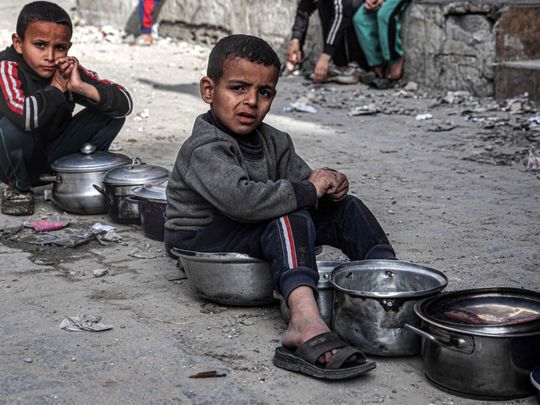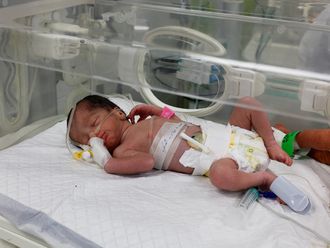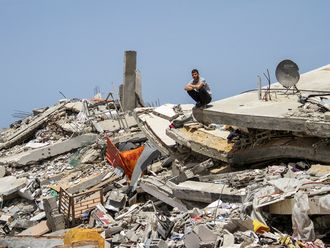
ROME: The United Nations, which warned on Monday of a “catastrophic” food crisis for more than one million people in Gaza, uses strict criteria to declare a famine.
It relies on its specialised agencies based in Rome, the World Food Programme (WFP) and Food and Agriculture Organisation (FAO), which in turn use the Integrated Food Security Phase Classification (IPC).
The IPC gathers evidence - such as how many households face an extreme lack of food - to draw up its Acute Food Insecurity scale, which is then used for decisions such as how resources are allocated.
In a report published on Monday, the IPC said half of people in Gaza - some 1.1 million people, according to its estimates - are experiencing “catastrophic food insecurity”.
It warned that famine was “imminent” in the north, but stopped short of declaring it.
What is famine?
Under the IPC classification, famine exists in areas where at least one in five households has or is most likely to have an extreme deprivation of food and face starvation, death, destitution and extremely critical levels of acute malnutrition.
The UN estimates that famine is “imminent” in the northern governorates of Gaza, where around 300,000 people live, and is projected to occur anytime between now and May.
With only a small fraction of the basic supplies coming in by land, aid donors have turned to deliveries by air drops and from the sea.
But UN agencies said these are no substitute for land deliveries.
How is famine measured?
Famine tops the IPC’s food insecurity scale, which has five phases.
Phase one is “Minimal” or no food insecurity in households. Phase two is when households are “Stressed”, phase three is when they are in “Crisis”, and phase four is “Emergency”.
Phase five, “Catastrophe / Famine” is when households experience “extreme critical levels of acute malnutrition and mortality”.

For famine to be declared, these three things must happen:
- at least 20 per cent of households must face an extreme lack of food.
- one out of three children must be acutely malnourished.
- there must be two deaths for every 10,000 inhabitants, or four child deaths out of 10,000 children per day, due to starvation or malnutrition and disease.
The WFP said: “The famine threshold for acute food insecurity has already been far exceeded, while acute malnutrition among children below five years is proceeding at record pace towards the second famine threshold.
“Non-trauma mortality - the final famine indicator - is accelerating, but data remains limited, as is typical in war zones.”
Causes of famine
The main causes of famine are:
- natural disasters such as drought, floods, or earthquakes; human pandemics and epidemics such as measles; or crop pests like locusts.
- economic crises which can affect food prices and jobs.
- when humanitarian aid is not brought in quickly or efficiently enough.
- conflict, which often leads to population displacements, prevents people from cultivating land, and destroys markets and infrastructure.
Who declares famine?
Once the criteria determined by the IPC are met, it is up to government authorities and UN agencies to declare a famine.
The last famines declared by the UN were in South Sudan in 2017 - involving almost 80,000 people - and in Somalia in 2011 - affecting some 490,000.












